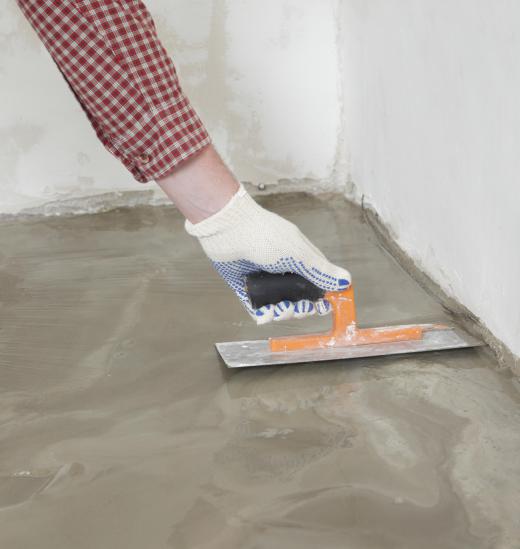A waffle slab is a type of building material that has two-directional reinforcement on the outside of the material, giving it the shape of the pockets on a waffle. This type of reinforcement is common on concrete, wood and metal construction. A waffle slab gives a substance significantly more structural stability without using a lot of additional material. This makes a waffle slab perfect for large flat areas like foundations or floors.
The most common material for a waffle slab is concrete. These slabs are used as the foundation for many different types of buildings and structures, but are most common in commercial or industrial buildings. Waffle foundations are resistant to cracking and sagging and can hold a much greater amount of weight than traditional concrete slabs.

The top of a waffle slab is generally smooth, like a traditional building surface, but the underside has a shape reminiscent of a waffle. Straight lines run the entire width and length of the slab, generally raised several inches from the surface. These ridges form the namesake square pockets of the entire length and width of the slab.
Other building materials have adopted the waffle design. It isn’t uncommon to find waffle ceilings in energy-efficient homes. These pockets both support the structure and help insulate the floor above by trapping hot air inside the pockets. This practice has spread to several other building materials such as sheet metal and fiberglass insulation. In both of these substances, the inherent reinforcement and insulating capabilities of the waffle shape are put to use, offsetting the parent material’s shortcomings.
In addition to waffle slabs, there are two other main kinds of concrete reinforcement methods. A corrugated slab has a wave pattern on one side. This pattern generally runs along the short direction, making the waves very long. This shape gives a small amount of stability to the slab, but also lets it sit relatively flat when needed. In addition to concrete slabs, corrugation gives additional stability to other substances like cardboard and sheet metal.
The second type of concrete reinforcement is ribbing; this is the step in between the corrugation and waffle patterns. This design creates defined, raised patterns in the concrete. Unlike corrugation, these are not rippled; they generally have right angles and defined edges. Unlike the waffle shape, they generally do no overlap. The ridged pattern may follow straight lines like the other methods, or it may have swirls and curves, creating greater reinforcement in high-weight areas.
